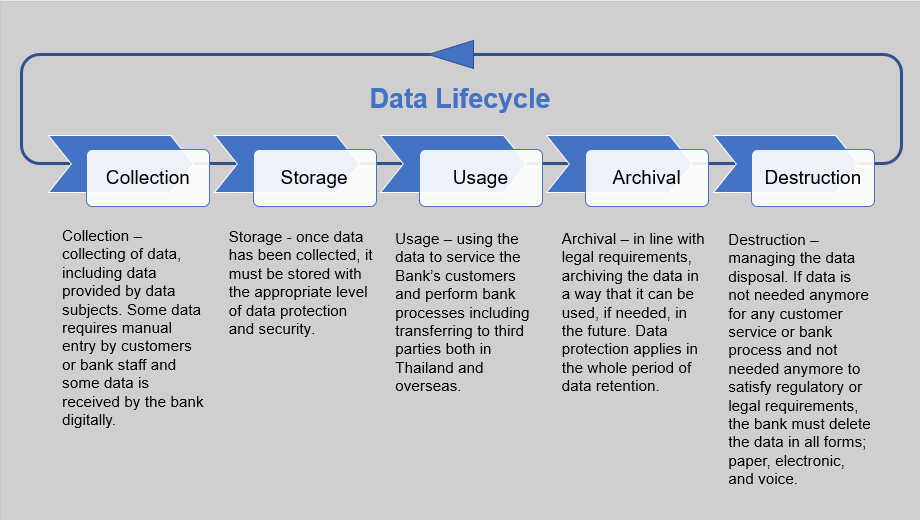Leading Tips for Ensuring Secure Data Destruction in Your Cyber Security Strategy
Exactly How Correct Data Devastation Adds to Robust Computer System Protection Services and Mitigates Risks of Information Breaches
In today's digital landscape, the significance of appropriate information devastation can not be overstated, as it offers as a fundamental element of thorough computer system safety services. The ramifications of insufficient information devastation prolong past plain compliance; they can exceptionally affect a company's cybersecurity stance and credibility.
Value of Information Devastation
In today's digital landscape, the significance of data damage can not be overemphasized. As organizations progressively count on electronic properties, the potential dangers related to information breaches and unapproved accessibility amplify. Effective data devastation is an important part of a thorough details protection technique, safeguarding delicate information from falling under the hands of harmful actors.
When data is no longer required, just erasing files or formatting disk drives is inadequate. Recurring data can often be recouped utilizing easily offered tools, posing significant risks to both people and companies. This underscores the need for robust information damage techniques that make sure all data is irretrievably erased.
Furthermore, governing compliance requireds, such as GDPR and HIPAA, emphasize the commitment to secure delicate information, including its proper disposal. Non-compliance can lead to extreme lawful effects and monetary penalties. data destruction. Hence, incorporating effective data damage protocols not just improves safety and security yet likewise strengthens an organization's credibility and trustworthiness

Techniques of Secure Data Erasure
Several effective approaches of safe data erasure can be employed to make certain that sensitive details is permanently eliminated from storage tools. One widely acknowledged method is data overwriting, which includes changing existing data with random patterns several times. This technique significantly minimizes the chances of data recovery, although it might not work against sophisticated forensic techniques.

Physical devastation is also a reputable method, where storage space gadgets are rendered unusable through shredding, crushing, or incineration. This approach ensures that data can not be recouped whatsoever however needs cautious handling of harmful products.
Finally, specialized software application devices made for safe and secure information erasure supply capabilities that adhere to various erasure standards. These devices often consist of features like verification procedures to validate successful data destruction.
Employing these methods in mix can improve data protection and alleviate the risks connected with information breaches, making certain that delicate info is not unintentionally revealed.
Legal and Conformity Considerations
The techniques used for safe information erasure not only offer to safeguard delicate details yet additionally needs to line up with legal and conformity structures regulating information security. Organizations are required to abide by numerous policies, such as the General Information Security Regulation (GDPR), the Medical Insurance Mobility and Liability Act (HIPAA), and the Payment Card Sector Information Safety Criterion (PCI DSS) These regulations mandate details procedures for information handling and destruction, making sure that sensitive and individual data is irretrievably gotten rid of when no longer required.
Failing to abide by these legal needs can cause significant penalties, consisting of penalties and reputational damages. Furthermore, organizations need to maintain documents of information devastation processes, showing compliance during audits or investigations. This paperwork not only shields against legal consequences however likewise reinforces trust fund with customers and stakeholders, showcasing a commitment to data protection.
Incorporating legal and compliance considerations into data damage methods is essential for any company. It reduces the danger of data breaches and illustrates an aggressive method to securing delicate info, eventually cultivating a society of safety and security and accountability across the organization.
Influence On Cybersecurity Position
Effective data devastation dramatically improves an check my source organization's cybersecurity pose by minimizing the potential attack surface area for cyber threats. When delicate information is not appropriately destroyed, it stays available to malicious stars that can exploit this information for unauthorized gain access to, identification theft, or business reconnaissance. By applying durable information devastation procedures, companies can properly decrease the danger of data violations and improve their total safety and security structure.
Additionally, the protected disposal of unneeded or outdated information not just shields delicate information however also aids companies adhere to sector regulations and requirements. Failure to properly damage data can cause extreme legal repercussions this hyperlink and reputational damage, further jeopardizing an organization's cybersecurity stance.

Eventually, prioritizing efficient information damage is essential for cultivating a durable cybersecurity stance, guaranteeing that organizations continue to be vigilant versus progressing cyber dangers while securing their critical properties and stakeholders.
Best Practices for Organizations
Executing best practices for information destruction is critical for companies intending to protect delicate info and reduce cybersecurity risks. Firstly, companies should develop a detailed information damage plan that details duties and treatments. This policy needs to conform with pertinent regulations, such as GDPR or HIPAA, ensuring lawful conformity.
Second of all, it is vital to use accepted data sanitization methods, consisting of data cleaning, degaussing, and physical damage, customized to the type of information and storage medium. Utilizing qualified specialists for data devastation services boosts the dependability of these approaches.
Additionally, companies ought to keep a comprehensive supply of all data storage tools, guaranteeing that all out-of-date or replaced equipment goes through damage. Routine audits of information destruction methods can help boost and identify weaknesses conformity.
Employee training is an additional critical element, as team must comprehend the importance of information damage and follow established methods. Ultimately, companies should document all data destruction activities to supply liability and traceability, which can be important throughout audits or in case of a violation.
Conclusion

One commonly recognized approach is information overwriting, which involves changing existing data published here with random patterns several times.The approaches utilized for secure information erasure not only offer to protect delicate details yet additionally has to line up with lawful and compliance frameworks regulating data defense. These policies mandate particular procedures for information taking care of and damage, ensuring that personal and delicate data is irretrievably removed when no longer needed.
By executing durable information destruction procedures, companies can efficiently reduce the risk of information violations and enhance their total protection framework.
In final thought, appropriate information devastation is essential for enhancing computer protection services and mitigating the threats associated with information violations. - data destruction